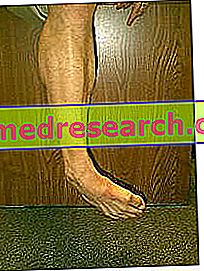
Scientific name
Silybum marianum, sin. Carduus marianus L.Family
Asteraceae (Compositae)Origin
Milk thistle is a widespread plant in central and southern Italy and on the islandsUsed Parts
The drug consists of flowering tops and seeds.Chemical constituents
- Flavolignani (these components form a phytocomplex called silymarin, mainly consisting of three molecules: silibin, silicristina and silidianina);
- Flavonoids (apigenin, quercetin, kaempferol);
- tocopherols;
- Sterols (sitosterol, campesterol);
- Tannins;
- Bitter substances;
- Amine (histamine, tyramine);
- Oils (linoleic, oleic and palmitic acids).
Milk thistle in herbal medicine: Properties of milk thistle
Silymarin present in milk thistle has an antioxidant and hepatoprotective action, which makes it indicated in various forms of hepatocellular suffering (it accelerates the liver regeneration process by increasing the metabolic activity of liver cells; it stimulates protein synthesis; defense function against several hepato-toxic substances, including alcohol).
Biological activity
Different properties are attributed to milk thistle, among which the hepatoprotective and antioxidant ones stand out in particular. More specifically, these activities are attributed to the silymarin contained in the plant.
Several clinical studies have confirmed the aforementioned properties attributed to the plant, so that its use has been officially approved for the treatment of hepatobiliary disorders.
The hepatoprotective action carried out by silymarin is expressed through different mechanisms of action. First of all, the silymarin - in particular, the silicristina and the silidianina contained in it - is able to protect the liver from substances toxic for it (such as alcohol and toxins), through a modification of the cellular membranes of the hepatocytes. In fact, this modification prevents toxic substances and toxins from entering the liver cells.
Silybin, on the other hand, performs its hepatoprotective action by reducing the production of superoxide anions by Kupffer cells and by inhibiting the synthesis of leukotrienes in the liver. Therefore, silibin plays an antioxidant and free-radical scavenger role.
Silymarin also increases the hepatic levels of glutathione (an important endogenous antioxidant agent), decreases oxidation and stimulates RNA polymerase I at the hepatocyte nucleus, thus promoting liver regeneration.
Many researches have been carried out on the aforementioned properties of silymarin, from which it emerged that this substance is particularly effective in protecting the liver from the action of various types of toxic agents, such as thioacetamide, carbon tetrachloride, galactosamine, amanitin and phalloidin (this 'last two molecules are found inside poisonous fungi).
Furthermore, a recent study has also shown that silybin and silicristine are able to exert a protective effect on the kidneys from cellular damage caused by paracetamol, vincristine and cisplatin, through the increase of the proliferation rate, the stimulation of protein synthesis and DNA and the increased activity of lactate dehydrogenase in renal cells.
Milk thistle fruits are also used in infusions for the treatment - even in the long term - of mild dyspeptic disorders (a use which, moreover, has been approved).
Milk thistle against hepatobiliary disorders
Thanks to the antioxidant and hepatoprotective properties that silymarin and its components present inside the milk thistle have been shown to possess, this plant can be used as an adjunct in the treatment of hepatobiliary disorders, such as: liver damage caused by toxic agents, liver cirrhosis and diseases chronic inflammatory effects of the liver.
For the treatment of these disorders, milk thistle is taken internally, generally, in the form of a dry extract. The amount of product to be taken can vary depending on the amount of silymarin it contains.
As an indication, some studies have shown that a daily dose of about 140-420 mg of silymarin, to be taken in divided doses, can be effective in treating the aforementioned liver disorders.
Milk thistle in folk medicine and homeopathy
The beneficial properties of milk thistle against the liver have long been known from folk medicine that uses the plant (fruits and leaves) precisely for the treatment of liver disorders. In addition, milk thistle is also used as an antidote in case of poisoning by poisonous mushrooms of the genus Amanita.
Milk thistle is also used in homeopathic medicine, where it is used in cases of jaundice, biliary colic, hepatitis, stomach pain, peptic ulcers and venous circulatory insufficiencies. Milk thistle as a homeopathic remedy, generally, can be found in the form of mother tincture, drops or granules.
The dose of remedy to be taken can be different between one individual and another, also depending on the type of disorder to be treated and the type of homeopathic preparation and dilution that is intended to be used.
Contraindications
Avoid the consumption of milk thistle in case of ascertained hypersensitivity to one or more components, in cardiac patients with hypertension (due to the presence of tyramine in the seeds) and in patients suffering from obstruction of the biliary tract.
Pharmacological Interactions
Milk thistle can establish drug interactions with:
- Metronidazole, since the concomitant intake of the plant or its preparations can decrease its effectiveness.
- Aspirin, since the metabolism of the drug is altered by the simultaneous intake of silymarin.
Warnings
Be careful because silymarin present in milk thistle can activate estrogen receptors.



